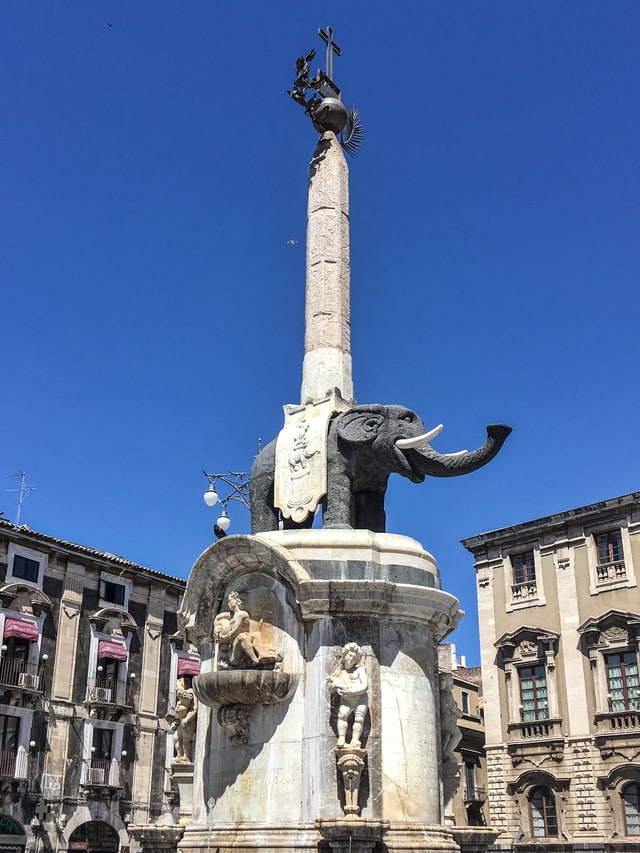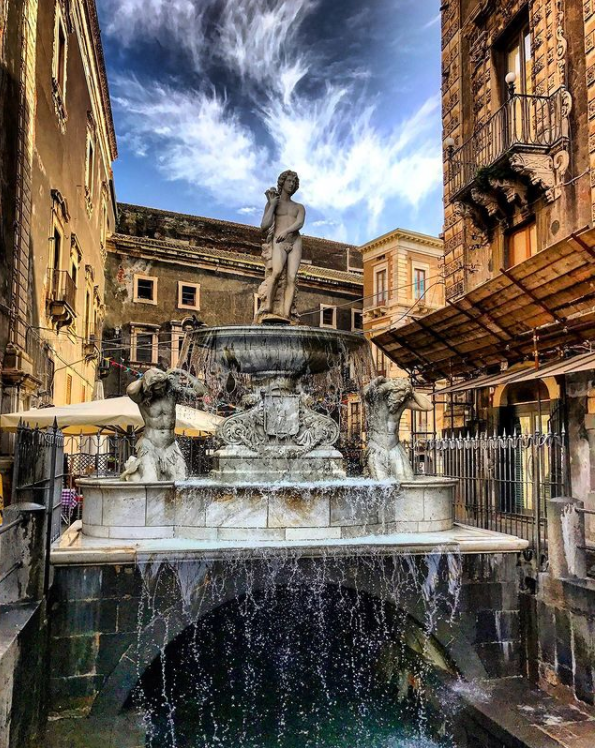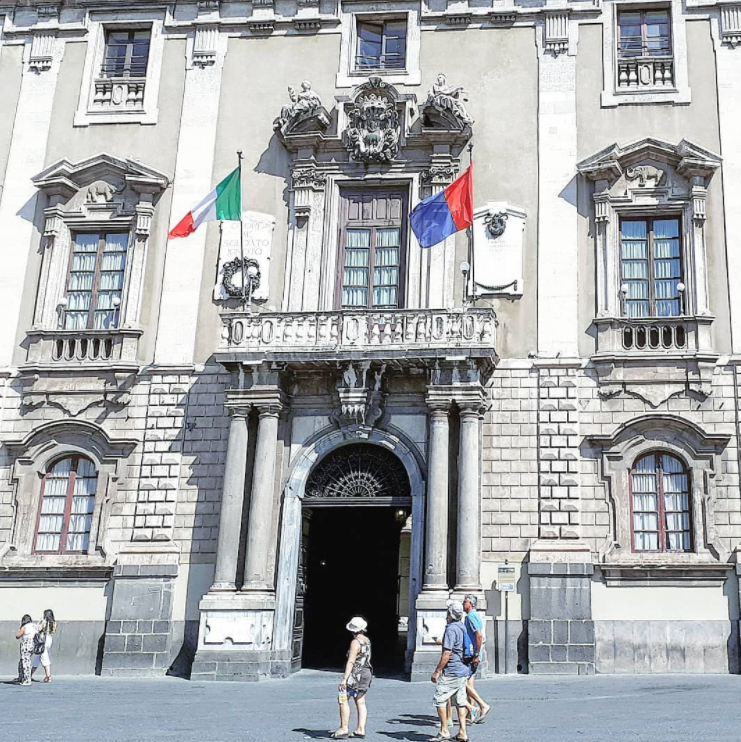Piazza del Duomo
Like everything in this city, the Piazza del Duomo, or the Square of the Cathedral is a creation of the huge construction works that followed the horrible earthquake of 1693. It was however based on the pre-existing open space that lay in front of the first Norman Cathedral and the ancient Roman baths before that. This is the historic center of the city and the point from which the Via Etnea originates.
It is where the Cathedral of Sant’Agata and the Palazzo dei Chierici, are located both joined by the Uzeda door. It is also the site of the Amenano Fountain, the Town Hall, and the Elephant Fountain. The Elephant Fountain stands in the center of Piazza Duomo in Catania and is the symbol of the city.
The obelisk was built in 1735-37, as a part of the post-earthquake reconstruction of the Cathedral of Sant’Agata, by the architect Giovanni Battista Vaccarini. Three volcanic stone steps support the basin of the fountain into which the water flowing from its side openings flows.


It has statues in high relief symbolizing the two rivers of Catania: the Simeto and the Amenano. Simeto river, in addition to being the first river in Sicily, is also associated with Sant’Agata, the protector of Catania. It is said that her persecutor, Quinziano, died in its waters.
The river is represented with human features, the figure of a king lying on a shell, holding a spade, and pouring water; it symbolizes the fertility of the Catania area. The Fountain of the Amenano is another beauty of Piazza Duomo. It was built in 1867 by the Neapolitan sculptor Tito Angelini with fine marble from Carrara and is located next to the Palazzo dei Chierici (Diocesan Museum).
It is dedicated to the Amenano River which is unlike the Simeto. it is no longer visible due to an eruption of Etna in 252 BC which buried it together with the lake of Nicito. Amenano is a pagan deity worshiped by the Greeks. It is depicted with the appearance of a bull with the head of a man that is also depicted in some coins of the fifth century BC.
The young divinity holds a cornucopia in its hand from which the water flows onto two tritons placed at its feet at the far end of the source. Under the shell there is the coat of arms of the city, while on the back is the name of the divinity, the symbol it represents, that is Water, and the date of construction, 1867.



The peculiarity of the fountain is that which in the popular jargon of Catania is called “ aqua a linzolu”. The shape of the water jet pours compactly and subtly, almost forming a transparent veil. Under the fountain we find an arch that collects the water: it represents the only point where it is possible to admire the course of the river, which ends its course in the nearby port, and which flows at a depth of about two meters below the ground level.

